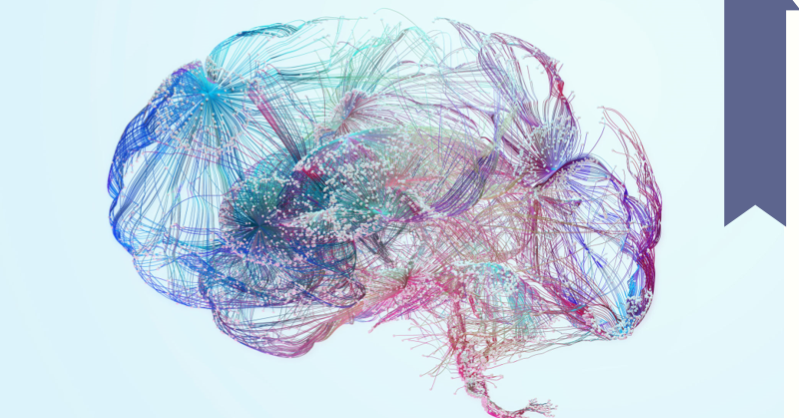
Neuroplasticity, the brain’s remarkable ability to reorganize itself by forming new neural connections throughout life, provides the basis for learning new skills and adapting to change – a particularly empowering thought for professionals who want to thrive by embracing continuous growth.
The Science Behind Neuroplasticity
Previously considered an immutable organ, the brain is now understood to be dynamic, reconfiguring itself in response to our experiences. From morphological changes in brain areas, changes in neuronal networks including changes in neuronal connectivity as well as the generation of new neurons, to neurobiochemical changes, new studies demonstrate how the brain can change in response to training.
However, neuroplasticity encompasses more than just the creation of new connections; it also involves pruning synapses that are no longer needed, optimizing the brain network. This is necessary when we want to give up bad habits, for example, neuronal reduction, a decrease in the number of connections or in the complexity of neuron branching, are intrinsically linked to the brain’s inherent capacity for neuroplasticity.
When we talk about losing gray matter in the brain, it seems to be a detriment, but during pregnancy, it is associated with an adaptive response to support the cognitive and emotional demands of motherhood (Hoekzema et al., 2017). This lasts for at least 2 years after pregnancy and does not necessarily indicate a lack of cognitive function – although pregnant women can sometimes experience a lack of memory.
Practical Tips for Harnessing Neuroplasticity
So how can we harness this intrinsic power of the brain? Here are some practical strategies:
- Embrace Continuous Learning: Challenge your brain with new skills. Whether it’s learning a new language or a musical instrument, such cognitive challenges can stimulate neural growth (Draganski et al., 2004). Don’t want to get involved in such a big learning curve? Start slowly: learn a new skill for your job or use your non-dominant hand to brush your teeth, eat or wash the dishes. Anything that requires your full attention is good training.
- Diversify Your Skill Set: Engage in multiple trainings. Just as athletes benefit from a varied exercise regime, professionals can build a more resilient brain by diversifying their skill set, from artistic activities such as drawing and painting, to programming (Ballesteros S. et al., 2018), engage in practicing skills you’re not used to. Training apps such as Lumosity, Peak and CogniFit Brain Fitness offer free access to a range of cognitive training exercises.
- Conscious repetition: Practice makes perfect, and repetition is the key to mastery. However, it’s the conscious repetition that matters. As you practice, stay present and attentive to refine your skills and forge stronger neural pathways.
- Healthy Habits: Prioritize sleep, nutrition and exercise. The brain requires quality fuel and rest to optimize its plasticity (Fuchs and Flügge, 2014). REM sleep has multifaceted functions in brain development, learning and memory consolidation, selectively eliminating unused synapses and maintaining newly formed synapses (Li et al., 2017). Excessive food intake in the West seems to be almost as damaging to cognition as the lack of it in underdeveloped countries, so eat frugally and consider fasting – I’ll talk more about this in another article. A plant-based diet, diversifying vegetables, legumes, cereals, nuts and seeds should provide all the nutrients you need for good cognition. Make sure you get enough fats, especially omega-3 DHA and EPA, B vitamins and minerals such as magnesium and zinc, which are essential for brain function. Nutrients such as omega-3 fatty acids and antioxidants have been associated with improved cognitive function and its preservation (Ekstrand B. et al., 2021). Both aerobic and resistance training can increase neuroplasticity and cognitive function by increasing neurotrophic factors – which support the growth, survival and differentiation of developing and mature neurons – and by increasing cerebral blood flow and cerebrovascular resistance (Fernandes et al., 2020).
- Stress Management: Although a certain level of stress can be stimulating, chronic stress can inhibit neuroplasticity. Techniques such as controlled breathing, progressive muscle relaxation and guided visualization can mitigate stress and promote an environment conducive to brain growth (Dusek et al., 2008).
- Meditation: The practice has been associated with positive effects on the structure and function of the brain. Mindfulness exercises or meditation increase the neurotrophic factor (Gomutbutra P. et al. 2020). Focused attention meditation can lead to changes in the brain’s functional networks: the default mode network, associated with internal modes of cognition such as self-reflection; the fronto-parietal network, involved in sustained attention, complex problem solving, working memory and cognitive control; and the sensorimotor network, responsible for processing external physical stimuli, feeling internal sensations, evaluating the senses and producing a motor response (Kajimura et al., 2020). Mindfulness induces lasting changes in the structural connectivity of the brain, higher gamma brainwave oscillations, associated with the synchronization of neural activity in the brain and the control of connectivity between brain regions, and theta waves, considered important for promoting complex adaptive behaviors such as learning and memory (Lardone A. et al. 2018).
In conclusion, neuroplasticity allows us to adapt our brains to better perform tasks. It’s a testament to our potential for change and growth, which is shaped by new experiences. The more different skills we try out and train, the more different connections we activate and reinforce in our brain, which facilitates the acquisition of even more new skills. Consider engaging in cognitive training and optimizing your habits to ensure an optimal environment for brain function.
Engaging in a healthy diet, mindfulness, body movement and meditation has long been suggested by ancient Eastern cultures, knowledge that Western society has only recently begun to apply with the backing of science. Since this positively affects the vitality and longevity of the body in general, it’s smart of us to follow the recommendations.
Remember, the journey to a more adaptable brain is continuous – every challenge faced, every new skill learned, every good habit formed and every new experience is a step towards a stronger, more resilient mind. See you next time!
References:
- Draganski, B. et al. (2004). Temporal and spatial dynamics of brain structure changes during extensive learning. The Journal of Neuroscience, 24(23), 6314-6317.
- Ballesteros S., Voelcker-Rehage C and Bherer L (2018) Editorial: Cognitive and Brain Plasticity Induced by Physical Exercise, Cognitive Training, Video Games, and Combined Interventions. Frontiers in Human Neuroscience, 12, 169.
- Ekstrand B. et al. (2021). Brain foods – the role of diet in brain performance and health. Nutrition Reviews, 79(6), 693-708.
- Dusek, J. A. et al. (2008). Genomic counter-stress changes induced by the relaxation response. PLoS ONE, 3(7), e2576.
- Fernandes, M.S. et al. (2020). Effects of Physical Exercise on Neuroplasticity and Brain Function: A Systematic Review in Human and Animal Studies. Neural Plasticity, 2020, 8856621.
- Balesio, A. et al. (2022). Peripheral brain-derived neurotrophic factor (BDNF) in insomnia: A systematic review and meta-analysis. Sleep Medicine Reviews, 67, 101738
- Hoekzema, E. et al. (2017). Pregnancy leads to long-lasting changes in human brain structure. Nature Neuroscience, 20, 287-296 .
- Li, W. et al . (2017). REM sleep selectively prunes and maintains new synapses in development and learning. Nature Neuroscience, 20, 427-437.
- Kajimura, S. et al. (2020). Focused attention meditation changes the boundary and configuration of functional networks in the brain. Scientific Reports, 10, 18426.
- Lardone A. et al. (2018). Mindfulness Meditation Is Related to Long-Lasting Changes in Hippocampal Functional Topology during Resting State: A Magnetoencephalography Study. Neural Plasticity, 2018, 5340717.
- Fuchs E. and Flügge G. (2014). Adult neuroplasticity: more than 40 years of research. Neural Plasticity, 2014, 541870.
- Gomutbutra P. et al. (2020). The Effect of Mindfulness-Based Intervention on Brain-Derived Neurotrophic Factor (BDNF): A Systematic Review and Meta-Analysis of Controlled Trials. Frontiers in Psychology, 11, 2209.



